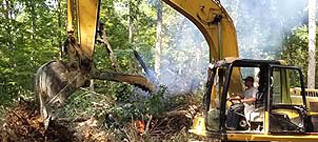By MARK MILLER
WASHINGTON (January 15, 2012)—The heads of two Piscataway Indian groups recognized by the state of Maryland this week said they are unlikely to pursue federal recognition for now, but the leader of a third said she wants to see the process through.
Gov. Martin O'Malley issued executive orders Monday recognizing the Piscataway Indian Nation and the Piscataway Conoy Tribe, which includes both the Piscataway Conoy Confederacy and Subtribes and the smaller Cedarville Band of Piscataway Indians.
"It says we're still here," said Billy Redwing Tayac, chief of the Piscataway Indian Nation, of the executive order recognizing his tribe. "We're not invisible people. That's very important."
However, federal recognition is a separate process conducted through the Bureau of Indian Affairs, a division of the U.S. Department of the Interior. On the heels of a decades-long fight for recognition, Tayac said he has no desire to repeat the process on the federal level.
"At the present time, we're not interested," Tayac said. "It's a tremendous effort. It's a tremendous cost."
BIA public affairs director Nedra Darling acknowledged the arduousness and expense of the federal recognition process. Federally, as in Maryland, there are criteria groups must meet to gain recognition. Among the seven criteria the U.S. requires are continuity as an American Indian entity since at least 1900; membership consisting entirely of descendants of a contiguous tribe or merger thereof; and demonstrable influence, historical and present, over the people they represent.
"To go through this process is what we have to do until told otherwise," Darling said. "Nothing is done willy-nilly. It's very much done by the process of meeting those seven criteria."
But Mervin Savoy, tribal chairwoman of the Piscataway Conoy Confederacy and Subtribes, said she is "not concerned at all" by the exacting process.
"We applied for federal recognition the same day we applied for state recognition," said Savoy. "Our petition is already on file," Savoy added.
While Natalie Proctor, tribal chairwoman of the Cedarville Band, said the same of her group's status, she echoed Tayac's concerns.
"We have not come together to really discuss that yet," said Proctor, emphasizing she could speak only for her particular group.
Proctor said she places other priorities, such as education outreach and maintaining the American Indian Cultural Center her tribe operates in Waldorf, above federal recognition.
Savoy said that while she is ready to keep working toward federal recognition, the choice is not entirely hers to make. The Piscataway people practice a form of direct democracy in making decisions as a group.
"I don't even know when federal recognition will come up in a community meeting," said Savoy. "That is up to the community. And the communities are the voice of the people."
O'Malley's communications director, Raquel Guillory, said "of course" the governor will support a drive for federal recognition by the Piscataway groups.
"I think the most important support is the actual state recognition," Guillory said.
Darling said the BIA stands ready to work with the Piscataway on achieving federal recognition.
"Our office does a lot of work to ... help (tribes) through the process," Darling said. "We meet with the group. We are obligated to provide technical assistance as they go through the process."
However, Darling said the BIA sent the most recent of those technical assistance letters to the Piscataway Conoy Confederacy in November 1995. It has not heard back, and so considers the group's application "inactive." There has been no further contact between the BIA and the Piscataway Conoy Confederacy, she said.
The Piscataway Conoy Confederacy is the only Piscataway group to have submitted its petition to the BIA, according to Darling, having done so in 1978.
The Piscataway groups have a fractious history, particularly since the death of Chief Turkey Tayac in 1978. The Piscataway Conoy Confederacy and the Cedarville Band joined forces to gain recognition as the Piscataway Conoy Tribe, and Savoy said the groups will continue to work together. But the smaller Piscataway Indian Nation, just 103 people strong, remains estranged.
The schism was the reason why separate executive orders recognized the differing groups on Monday.
"They are different people than us," said Billy Redwing Tayac, the Piscataway Indian Nation chief and son of Turkey Tayac, in reference to the other two Piscataway groups. "What they do is their business."
For her part, Proctor stressed her desire for the Piscataway to reclaim a more positive public image not marred by the reports of infighting between the groups.
"I only want the best for Piscataway people," Proctor said. "I only want a light to shine on them, from this day forth, in a very positive manner."


